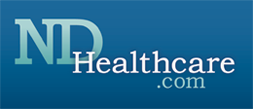Vitamin D deficiency is epidemic! Have you been tested yet? If not, please see your local, licensed Naturopathic Physician to find out if you are getting enough Vitamin D. A recent study by the Cleveland Clinic confirmed what I have been telling my patients for years: Vitamin D is best absorbed with a large meal. It is a fat soluble vitamin, so of course this makes perfect sense. The abstract outlining the details of the study is shown below.
I share this because I have had plenty of patients be tested and prescribed the weekly pink pill of 50,000 IU vitamin D by their MD with no details about when or how to take it. I have a couple of issues with this common scenario. First, people should be instructed to take Vitamin D with food. One of my patients was vomiting after her vitamin D pill every week because she took it on an empty stomach, not knowing any better. Next, I think lower daily doses of Vitamin D are as or more effective than a huge weekly dose, without the artificial coloring agents, fillers and binders of the prescription pills. I recommend liquid Vitamin D in doses of one to ten thousand IU daily with a large meal containing fat and see almost everyone I repeat test having raised their levels to the optimal range within 3-6 months depending on severity of deficiency.
Reference: J Bone Miner Res. 2010 Apr;25(4):928-30.
“Taking vitamin D with the largest meal improves absorption and results in higher serum levels of 25-hydroxyvitamin D.
Mulligan GB, Licata A.
Department of Endocrinology, Diabetes, and Metabolism, Cleveland Clinic Foundation, Cleveland, OH, USA.
Abstract
Many patients treated for vitamin D deficiency fail to achieve an adequate serum level of 25-hydroxyvitamin D [25(OH)D] despite high doses of ergo- or cholecalciferol. The objective of this study was to determine whether administration of vitamin D supplement with the largest meal of the day would improve absorption and increase serum levels of 25(OH)D. This was a prospective cohort study in an ambulatory tertiary-care referral center. Patients seen at the Cleveland Clinic Foundation Bone Clinic for the treatment of vitamin D deficiency who were not responding to treatment make up the stugy group. Subjects were instructed to take their usual vitamin D supplement with the largest meal of the day. The main outcome measure was the serum 259(OH)D level after 2 to 3 months. Seventeen patients were analyzed. The mean age (+/-SD) and sex (F/M) ratio were 64.5 +/- 11.0 years and 13 females and 4 males, respectively. The dose of 25(OH)D ranged from 1000 to 50,000 IU daily. The mean baseline serum 25(OH)D level (+/-SD) was 30.5 +/- 4.7 ng/mL (range 21.6 to 38.8 ng/mL). The mean serum 25(OH)D level after diet modification (+/-SD) was 47.2 +/- 10.9 ng/mL (range 34.7 to 74.0 ng/mL, p < .01). Overall, the average serum 25(OH)D level increased by 56.7% +/- 36.7%. A subgroup analysis based on the weekly dose of vitamin D was performed, and a similar trend was observed.Thus it is concluded that taking vitamin D with the largest meal improves absorption and results in about a 50% increase in serum levels of 25(OH)D levels achieved. Similar increases were observed in a wide range of vitamin D doses taken for a variety of medical conditions." (c) 2010 American Society for Bone and Mineral Research.
So, keep your vitamin D on the kitchen table and take it with your largest meal of the day to keep deficiency away!
Dr. Margaret Philhower
Naturopathic Physician
-
www.drmargaret.org






